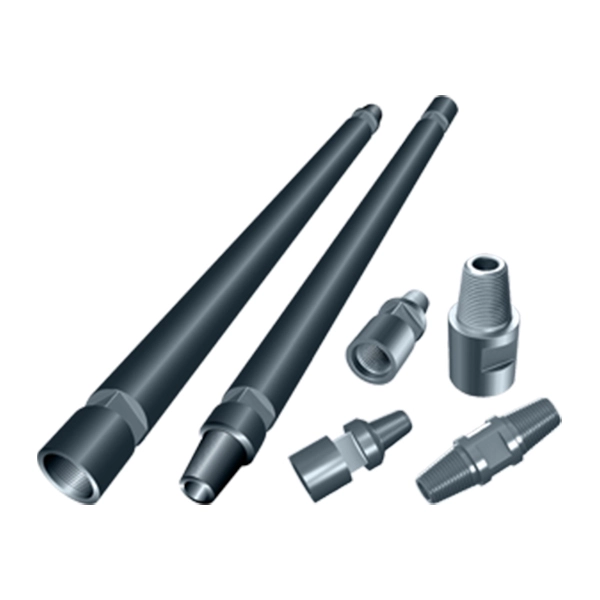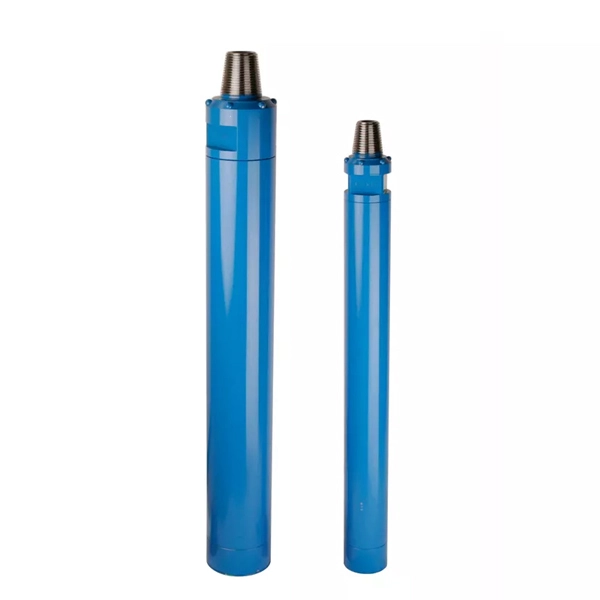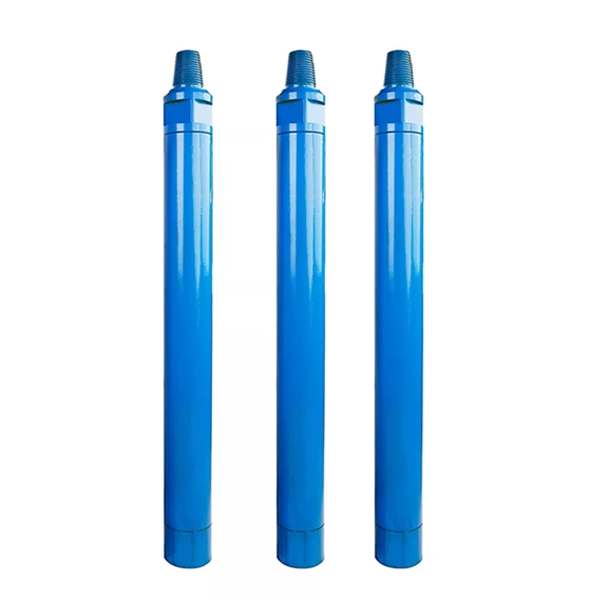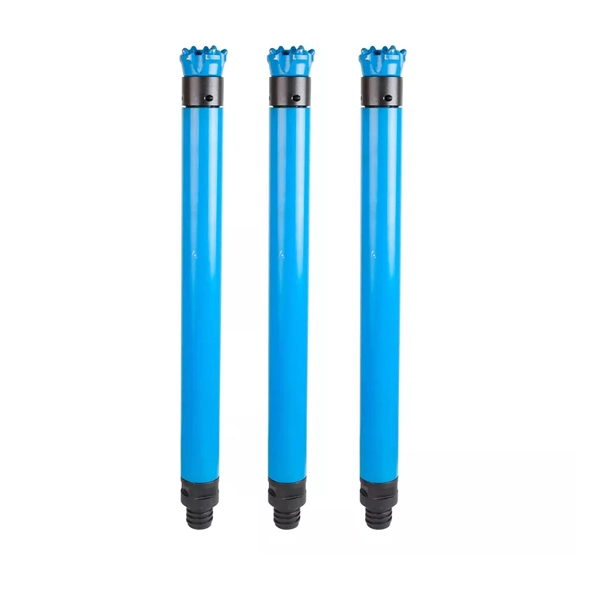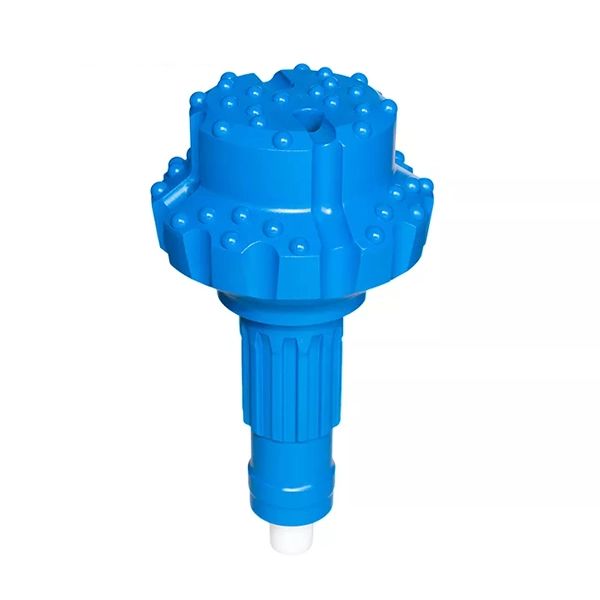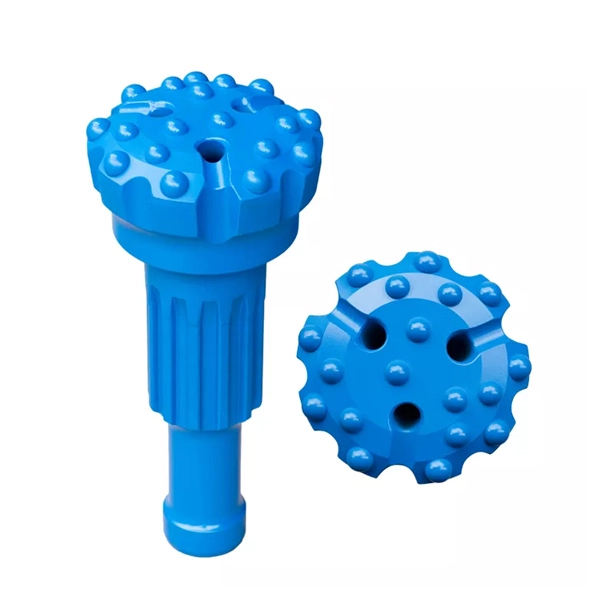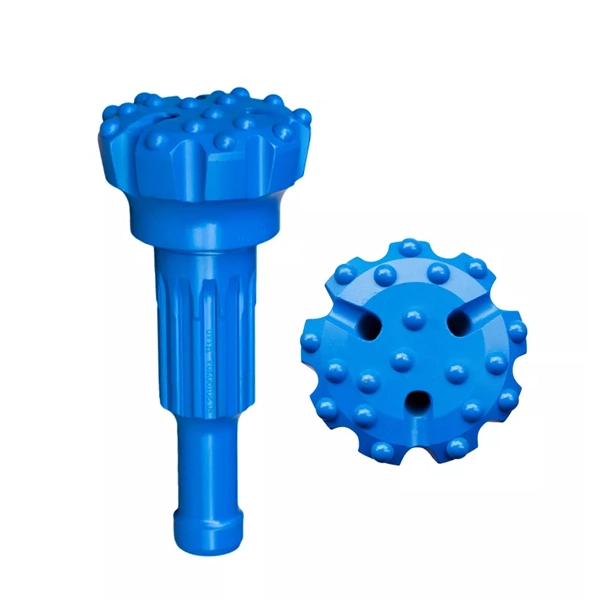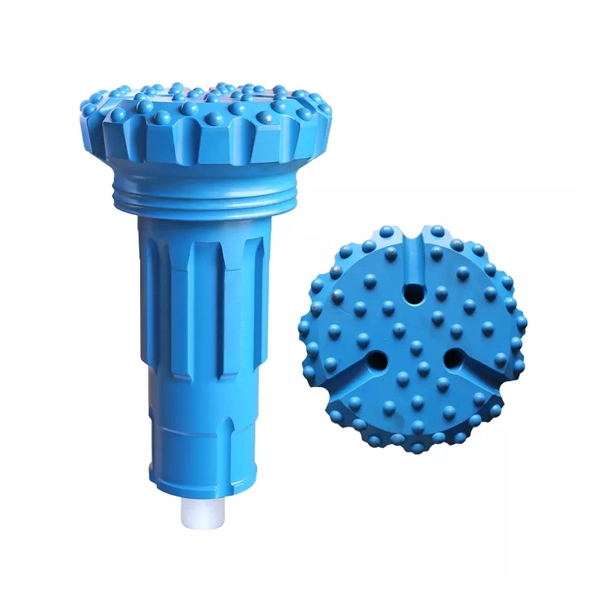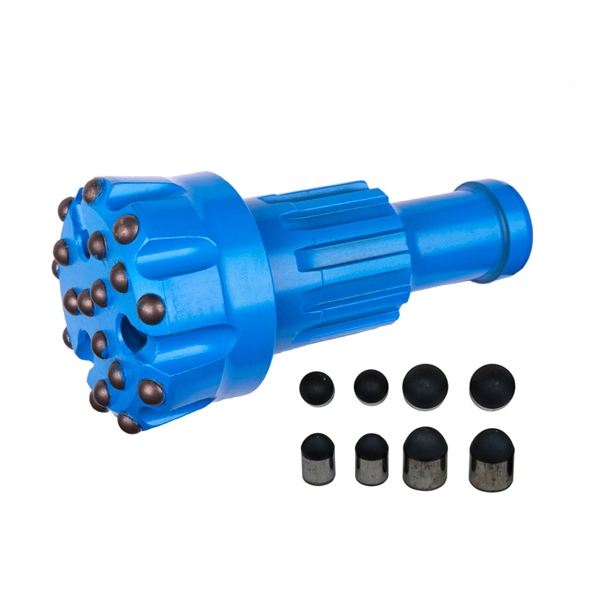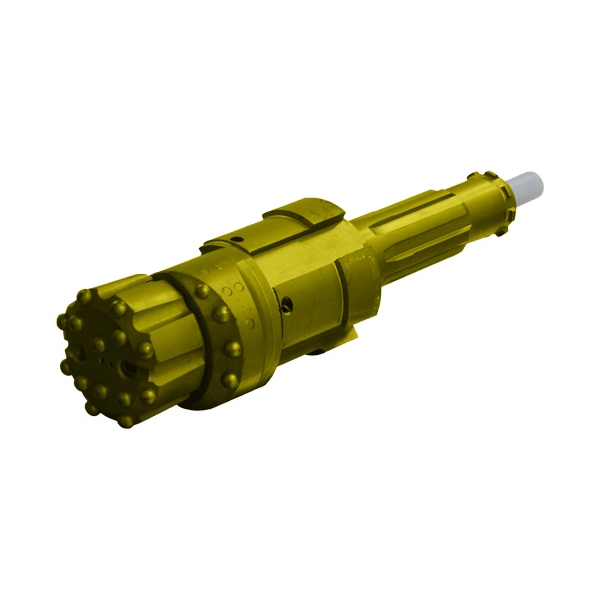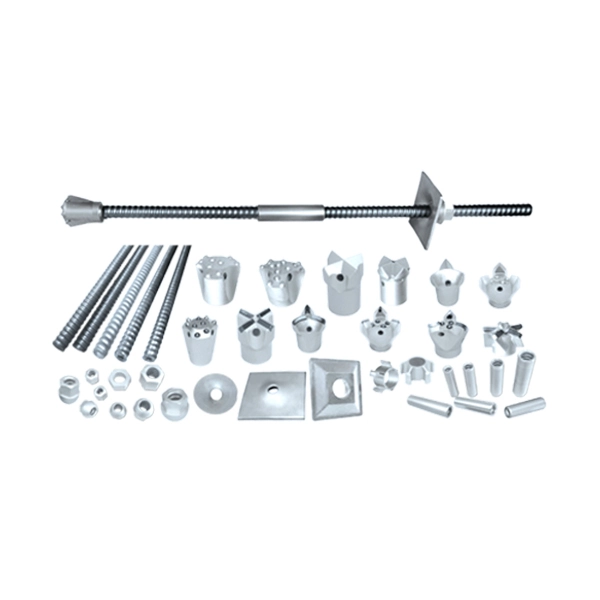PLATO is in the position to supply clients full range parts for DTH drilling tools chain, including DTH hammers, bits (or bits equivalent function tools), sub adapters, drill pipes (rods, tubes), RC hammers and bits, dual-wall drill pipes and hammer breakout benches and so on. Our DTH Drilling tools are also well designed and manufactured for mining, water well drilling industries, exploration, construction and civil engineering.
The down-the-hole (DTH) method was originally developed to drill large-diameter holes downwards in surface-drilling applications, and its name originated from the fact that the percussion mechanism (the DTH hammer) follows the bit immediately down into the hole, rather than remaining on with the feed as the ordinary drifters and jackhammers.
In the DTH drilling system, the hammer and bit are the basic operation and components, and the hammer is located directly behind the drill bit and operates down the hole. The piston strikes directly the impact surface of the bit, while the hammer casing gives straight and stable guidance of the drill bit. This means no impact energy loose through any joints at all in the drill string. The impact energy and penetration rate therefore remains constant, regardless of the depth of the hole. The drill piston is powered by compressed air delivered through the rods at supply pressure ranging typically from 5-25 bar (0.5-2.5 MPa / 70-360 PSI). A simple pneumatic or hydraulic motor mounted on the surface rig produces rotation, and flushing cuttings is achieved by the exhaust air from the hammer either by compressed air with water-mist injection or by standard mine air with a dust collector.
The drill pipes transmit the necessary feed force and rotation torque to the impact mechanism (the hammer) and bit, as well as convey compressed air for the hammer and flush cuttings by that the exhaust air blows the hole and cleans it and carries the cuttings up the hole. The drill pipes are added to the drill string successively behind the hammer as the hole gets deeper.
DTH drilling is very simple method for the operators for deep and straight hole drilling. In the hole range 100-254 mm (4” ~ 10”), DTH drilling is the dominant drilling method today (especially when the hole depth is greater than 20 meters).
The DTH drilling method is growing in popularity, with increases in all application segments, including blast-hole, water well, foundation, oil & gas, cooling systems and drilling for heat exchange pumps. And applications were later found for the underground, where the direction of drilling is generally upwards instead of downwards.
The main features and advantages of DTH drilling (mainly compare to top-hammer drilling):
1.Wide range of holes sizes, including extremely larger hole diameter;
2.Excellent hole straightness within 1.5% deviation without guiding equipment, more accurate than top-hammer, due to the impact being in the hole;
3.Good hole cleaning, with plenty of air for the hole cleaning from the hammer;
4.Good hole quality, with smooth and even hole walls for easy charging of explosives;
5.Simplicity of operation and maintenance;
6.Efficient energy transmission and deep hole drilling capacity, with constant penetration and no energy losses in joints through the drill string from start to finish of the hole, as with top hammer;
7.Creates less debris hang-up, less secondary breaking, fewer ore pass and chute hang-ups;
8.Lower cost on drill rod consumables, due to drill string is not subjected to heavy percussive force as with top hammer drilling and drill string life is therefore greatly lengthened;
9.Reduced risk of getting stuck in fractured and faulted rock conditions;
10.Lower noise level at the worksite, due to the hammer working down the hole;
11.Penetration rates are almost directly proportional to air pressure, therefore doubling the air pressure will result in approximately double the penetration.
- Page 1 of 1
Your email address will not be announced. The required field marking is*

